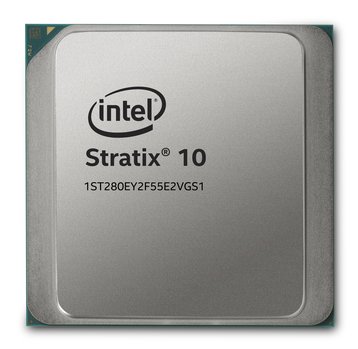Intel has started shipping Stratix 10 TX field-programmable gate array (FPGA) - the first device of its kind to feature 58 Gigabit PAM4 transceiver technology.
FPGAs are integrated circuits consisting of logic blocks that can be configured by the customer on the spot to accelerate specific workloads; due to its bandwidth capabilities, Stratix 10 TX is aimed at use cases in optical transport networks, network function virtualization (NFV) and 5G communications.
The new device builds upon the know-how Intel obtained with the purchase of FPGA specialist Altera for $16.7 billion in 2015, marking the company’s biggest ever acquisition.
For the field
FPGA technology has been around since the 80s, but has seen a surge of interest in recent years, with the emergence of new types of resource-intensive tasks like machine learning, data analytics and video processing.
Stratix 10 TX was created for network operators: Intel’s latest FPGA provides a higher aggregate bandwidth than any other FPGA currently on the market, by using 58G PAM4 (or 4-level Pulse Amplitude Modulation) transceivers. It can provide up to 144 transceiver lanes with serial data rates of 1 to 58 Gbps.
The device also supports traditional NRZ signal encoding for backwards compatibility with existing network infrastructure.
“In this smart and connected world, billions of devices are creating massive amounts of data that need faster, flexible, and scalable connectivity solutions,” said Reynette Au, vice president of marketing, Intel Programmable Solutions Group.
“With Stratix 10 TX FPGAs, Intel continues to provide architects with higher transceiver bandwidth and hardened IP to address the insatiable demand for faster and higher-density connectivity.”

